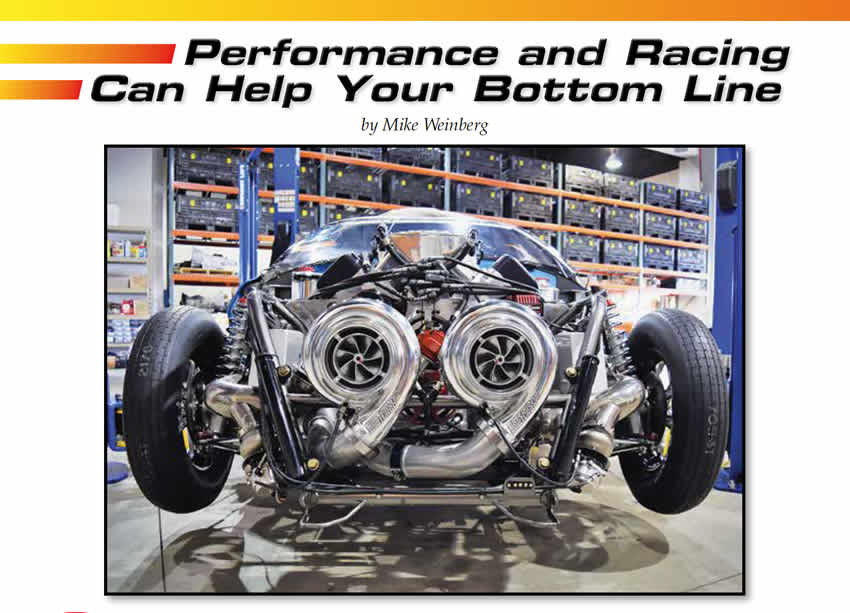
Miscellaneous Tech
- Author: Mike Weinberg
- Subject Matter: Providing new services
- Issue: Performance
Gone are the days of easy profits in the transmission rebuilding industry. Cars of today are complex and more difficult and expensive to diagnose and repair. The quality of manufacture is the best it’s ever been; longer-lasting transmissions, longer factory warrantees and lease intrusion all mean less available work for the shop.
The dealership is now a tough competitor in the market and shops are turning to general repair to keep the bays full. One area greatly overlooked is the performance and racing market. I started out as a professional race driver who went into the transmission business, so my company Rockland Standard Gear has been manufacturing race units since we started the business in 1981. Our brand of performance products is Tranzilla and it has had worldwide acceptance forever. Perhaps we should explain the terminology better regarding performance, which should really be “performance-enhancing products and services,” which any shop can provide.
It is human nature to be competitive and to have something better than your neighbor. Racing is one form of that but there are endless ways to improve vehicle performance that have nothing to do with racing and are available to any shop that wishes to add these services.
What is necessary is to begin to research what is popular and in demand in your area. Camping, off-road adventures, boating, hot rods, diesel trucks, import cars, RVs and regular cars have an endless amount of aftermarket products that customers will purchase to enhance the performance of their vehicles. The beauty of this market is that you are now dealing with customers who are HAPPY to spend the money to get what they want. We as transmission people have always functioned as undertakers; the customer has lost something they love and now have to pay for it. This does not create a happy environment, while installing a towing package or a heavy-duty set of shocks fulfills the customers’ needs and they can’t wait to try it out.
On the transmission side, there are endless additions you can make to the vehicle without having to reinvent the wheel. There are aftermarket suppliers who will provide performance-enhancing units from transmissions, torque converters, shift kits, computer enhancements, transfer cases, rear end gears, better performing valve bodies, clutches, to satisfy the customer’s needs. The limitations here are only those you accept.
If you are in a big Jeep market area there are endless products to improve on the vehicle from brakes, suspension, lighting, bumpers, winches, lift kits, drive shafts and any amount of off-road and rock-crawling products.
The diesel truck market has endless supplies of performance changing products that you can learn to install, as well as the same power and performance adders for gasoline-powered trucks and vans.
There is nothing to stop you from entering this market except yourself. You already have the shop, the manpower, the equipment that is probably underutilized at this point so your investment is in the learning curve as to which products are in demand in your area and how much time you want to invest in yourself. You are already doing all kinds of computer diagnoses and reflashing vehicles, so how big of a step is it to learn to apply a tuning program to get 50 more horsepower out of the stock computer?
You now will have to engage in a different kind of marketing, spending more time to understand the customer’s needs and desires. There are excellent profit margins available here but it will require more handholding and advice than usual if you are to create a repair that will meet their expectations. First and foremost, establish exactly what the customer wants to achieve. Then begin the education of your owner as to the fact that a vehicle is a complex set of interrelated systems that must function together and that any modification will create ripples in the pond.
The most common error is to promptly add 200 horsepower to the engine, which will affect every part of the powertrain and driveline. In order, the clutch, transmission, driveshaft, rear end, then the brakes will all need replacement with suitable parts. At this point we will be in the suspension and tires to get the power to the ground and make it usable for some forward motion without boiling the tires. An in-depth study of needs and solutions saves money and time.
A simple deal like replacing wheels and tires with different sizes or changing a rear-end ratio for better economy or faster launches means finding out how to recalibrate the speedometer so that the computer doesn’t throw codes and the put the transmission into limp mode.
There is a tremendous amount of help available to you in your learning curve. Organizations such as Specialty Equipment Manufacturers Association (SEMA), and Professional Racing Industry (PRI) all have annual trade shows and magazines. The print media and internet are full of companies bringing to market the latest and greatest products to improve your bottom line and the customer’s vehicle. All of the aftermarket vendors will be glad to work with you and help in your education.
It won’t come to you; you have to go get it. Why not explore offering some new services to your customer and see if the cash register complains?













